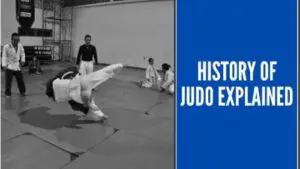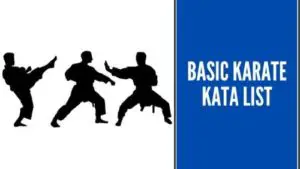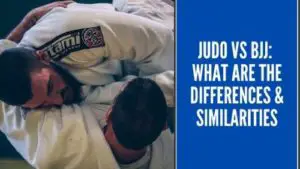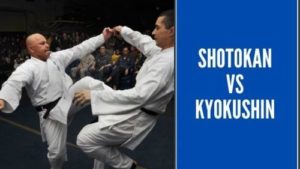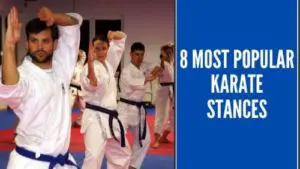Martial arts have always been popular among people worldwide. This is because they are entertaining and useful for life. While Karate tends to be more popular, to some extent thanks to Bruce Lee, Judo is also a favorite among the population being an Olympic Sport. Whatever the case may be, both of them have their own place in martial arts.
They are over 100 years old and have proven effective for people to learn how to defend themselves from possible and unwanted attackers. In this article, we will explain the main characteristics of Karate vs Judo as well as the similarities and differences between them.
Main Characteristics of Karate
Karate is mainly based on the art of striking. Karatekas resort to kicks, knee hits, punches, and open and hand and elbow strikes to defeat their opponents. Strike blocking is also an important part of it as well as proper breathing.
Joint locks and throws are also used in it. In a non-competition setting, weapons are also used. These weapons are not traditional ones, they are farm weapons which were similar to those used by the Okinawans when they needed to fight in an epoch when they were forbidden.
Like basically the majority of martial arts, karate is aggressive and it is not completely a self-defense martial art. Blocking strikes are a foundation. Striking back to disable them is the other part.
Related: 8 Most Popular Karate Stances
Main Characteristics of Judo
Judo IS the Japanese for the “gentle way”. It is a well-balanced martial art that has as its main characteristic fighting strategies and tactics, timing, and balance.
All of these principles are meant to be applied to the grappling and throwing techniques. Judo gives the practitioner high energy levels as well as a relaxed state of mind.
Similarities between Karate and Judo
The main similarity between Karate vs Judo is that they are or can be used for self-defense and were developed in Japan. Any person practicing any of these two sports will find that he will be doing a full-body workout as all the muscles need to be exercised when practicing it.
Mental strength is a must for both sports. For this reason, patience and discipline are taught along the way as the student learns the techniques of the sport.
Both sports are great for building confidence. The fact that people will be learning how to defend themselves in a way only a few people know can help increase their self-esteem.
The benefits derived from both martial arts are similar. Forming a person on a holistic and integral level is at the forefront of both sports. Practitioners will achieve a high level in terms of a physical and psychological state as long as they practice regularly.
Given the complex movements required to be made in Judo and Karate, warming up is always required to prevent injuries. No shoes are worn in either of them. People have to train barefoot because of a couple of reasons. First of all, it is because that is customary In Japan.
People are expected to respect the traditions of Japan in which is disrespectful to enter a home with shoes on. Also, spatial intelligence is improved by practicing them barefoot since people are not only more aware of their surroundings but also use muscles they wouldn’t normally use to balance their bodies out.
The way people advance is also similar in Karate vs Judo when it comes to belts. All beginners start with the white belt on both of them. The highest rank you can get on Karate vs in Judo is the 1 Dan black belt.
In both sports, the rankings go from 1 to 10 where the first ones are the most advanced ones and the latter ones are the amateur ones. In Judo, however, additional belts are used for beginners first.
These range from the 6a Kyu white belt which symbolizes purity to the 1a Kye brown belt which symbolizes the beginning of knowledge.
Related: Basic Karate Kata List
Differences between Karate and Judo
One difference between karate vs judo is the way they were invented. While no historian agrees on the exact origin of Judo, many agree that it was created by a Buddist monk known by the name of Bodhidarma.
He designed it as a way to improve both the mind and the body. Thus, it wasn’t originally established as a fighting method. On the other hand, Judo was an innovation of jujitsu by combining it with mental discipline techniques.
Thus, fighting was always on its focus. Also, Judo is considered to be a soft martial art in which movements are made to disable the opponent whereas, in Karate, a hard martial art, blows are the main priority.
In Karate, the efforts are put in the hands and legs by throwing punches. In Judo, they are made in the body to balance forces out to make the opponent fall.
In competition, points are made by striking in Karate. On the other hand, in Judo, points are made by throwing the other person on the floor.
Also, in Judo, no punches in the face are allowed while in Karate they are. Thus, Judo fighters are at a disadvantageous position when fighting not on the ring since they don’t master the art of defending this important part of their bodies. In fact, Karate encourages people to hit others in the head since this is the most vulnerable part of a person.
On the other hand, when the battle takes place on the ground, a Judo has more chances of defeating a Karateka since grappling is very well taught in this discipline as opposed to the long-targeted strikes taught in Karate.
The learning curve for Judocas is faster than that of Karatekas. Any person with just a few sessions can expect to fight with those techniques. On the other hand, the many types of punches and kicks that make part of Karate make it hard for beginner practitioners to engage in this sport actively.
The dress also differs. In Karate, which pretty much anyone can recognize, It consists of a white jacket, white pants, and a belt. The same goes on for Judo but with the difference that in this one the color blue is used.
Thre is no better martial art than another. It just depends on the tastes and preferences of the individual and how inclined he or she feels towards them.
As you have seen, they have many things in common as well as many things that set them apart from each other. However, the benefits are equally good as self-defense techniques are learned and higher self-esteem is achieved thanks to the new skills acquired.

